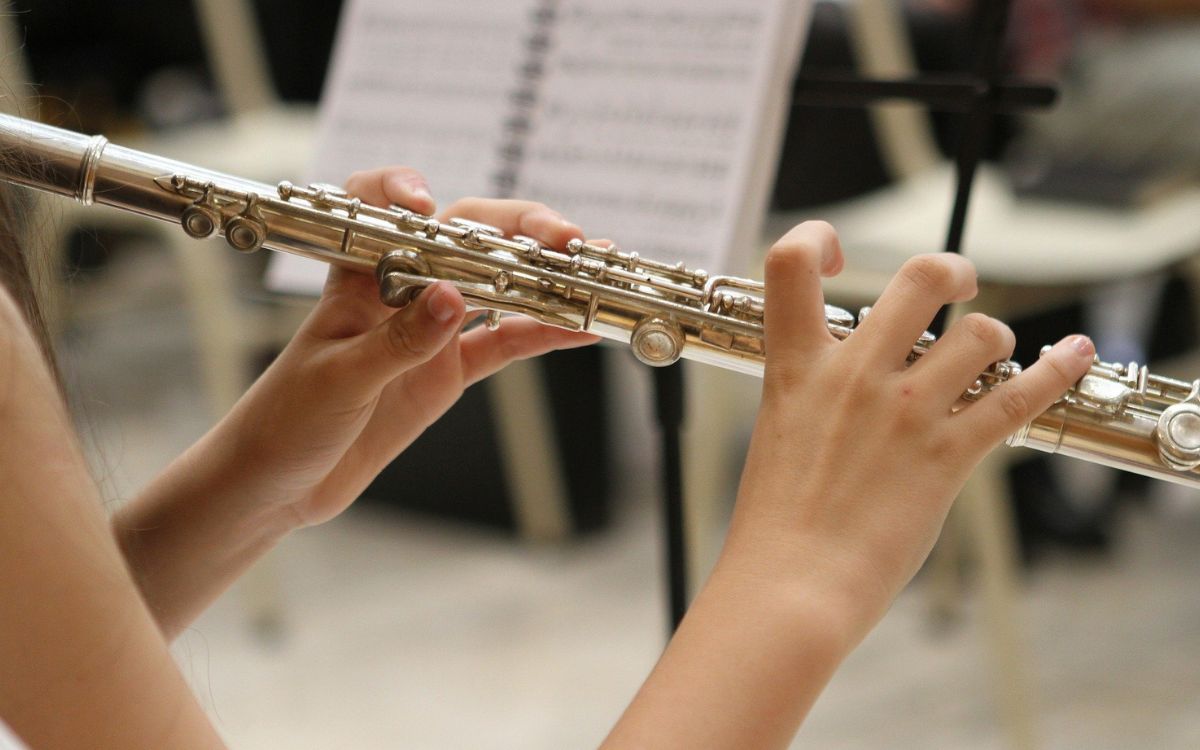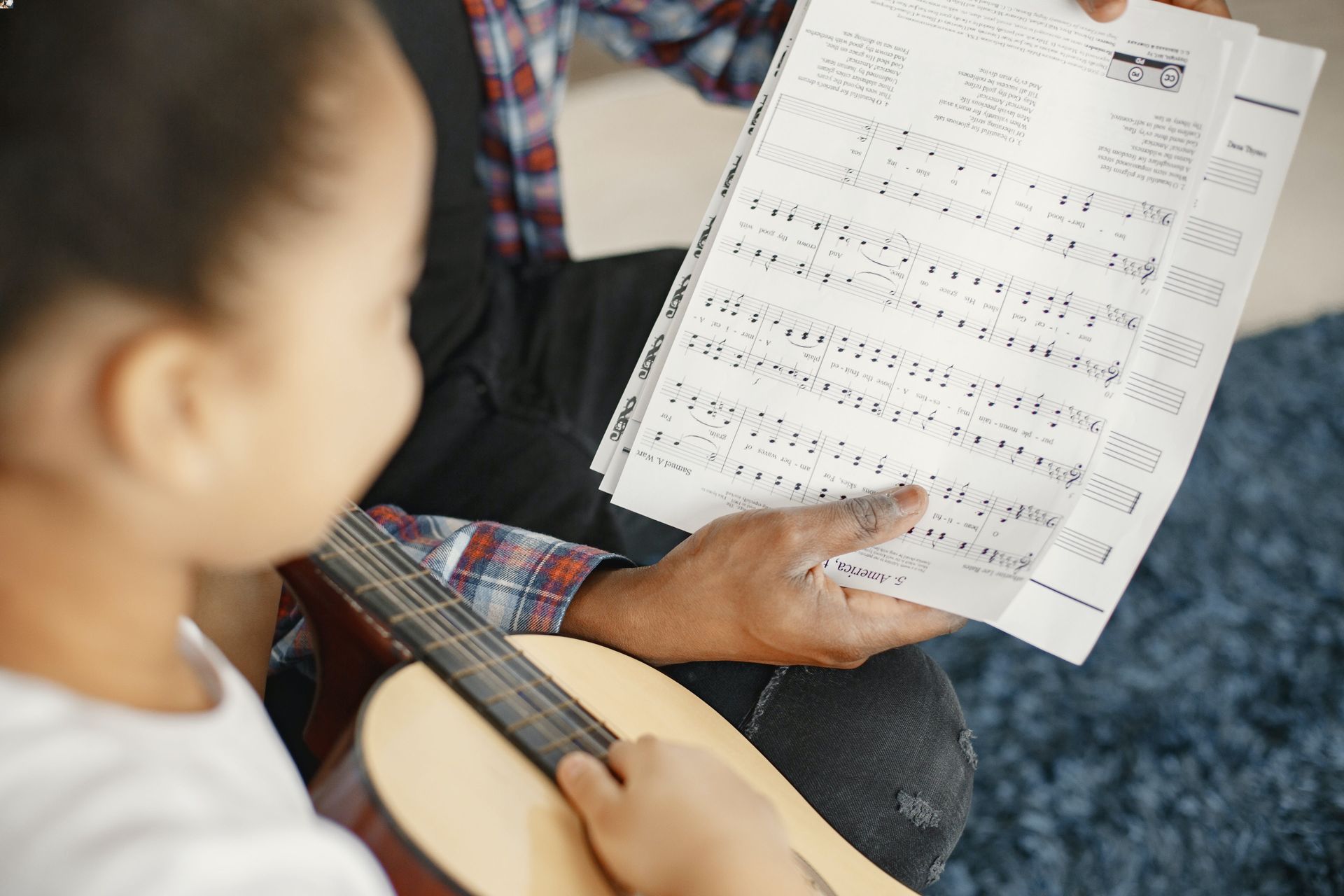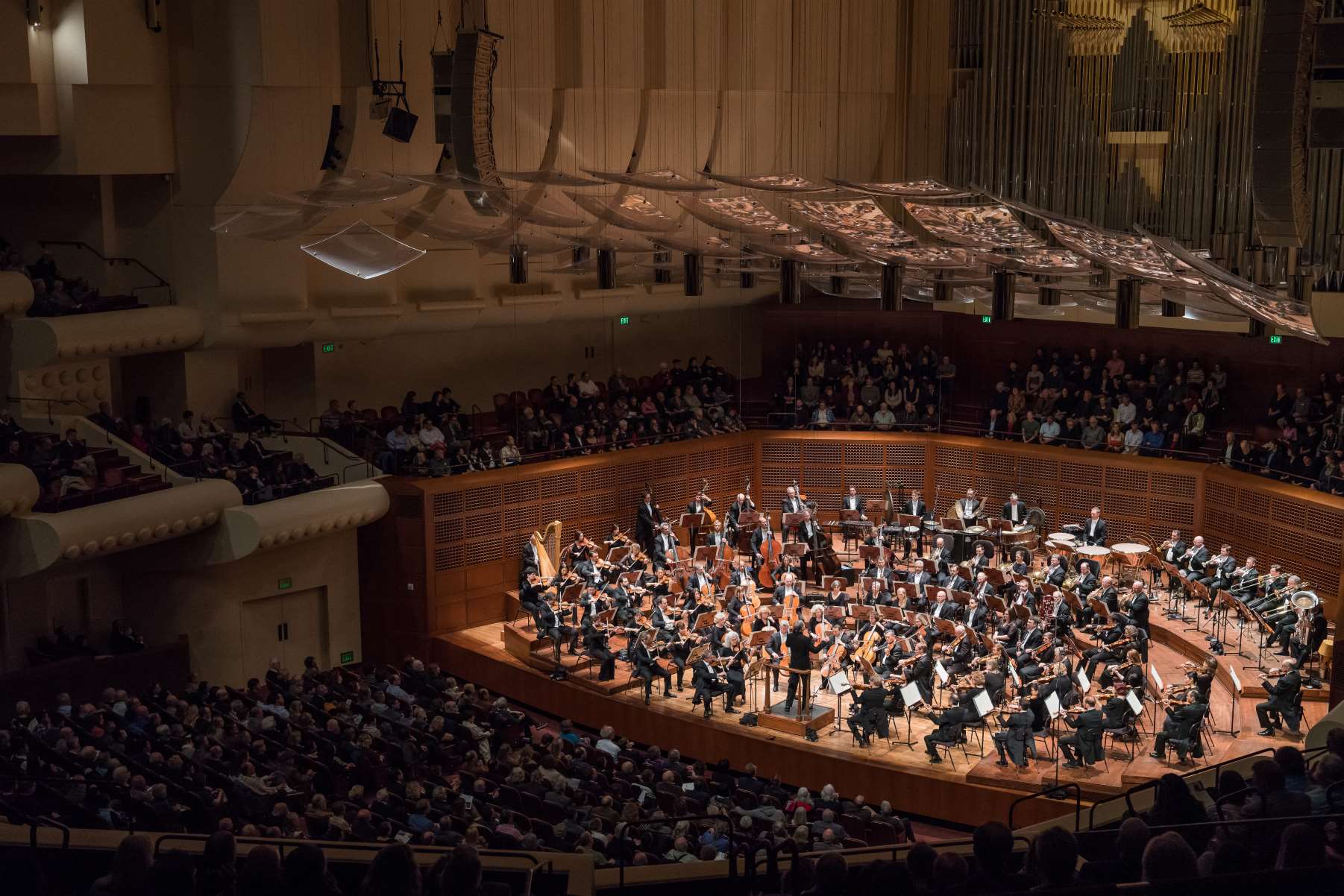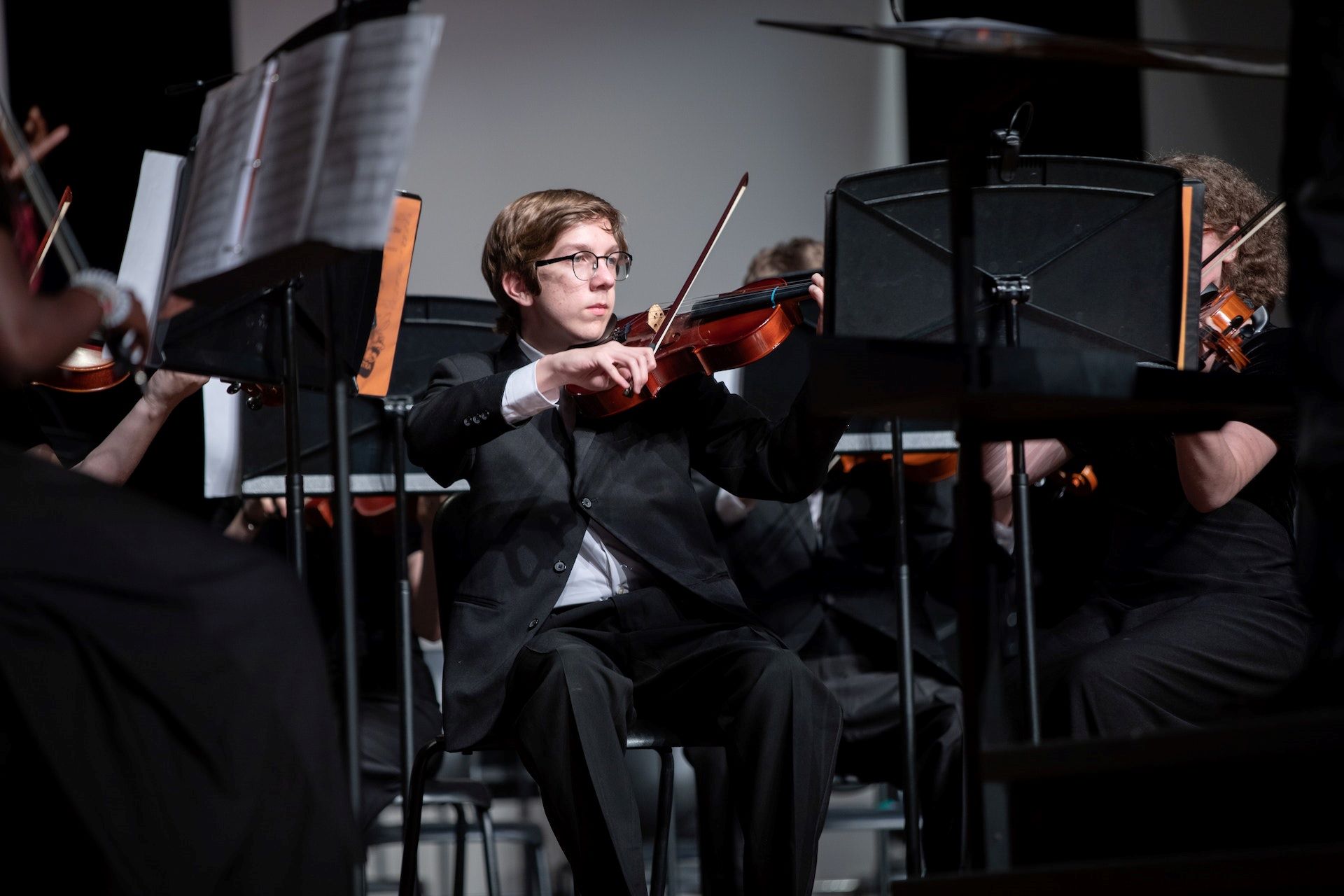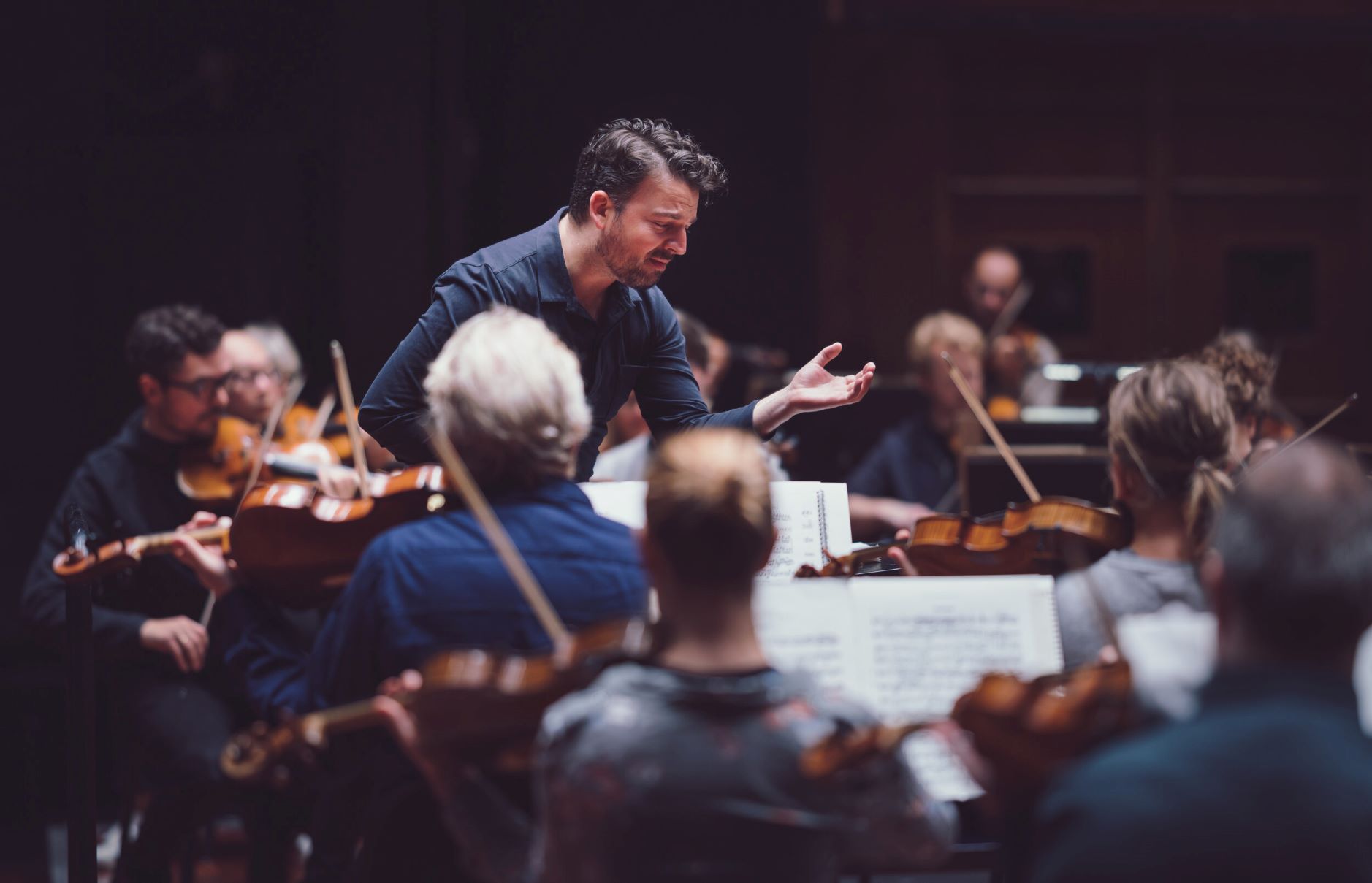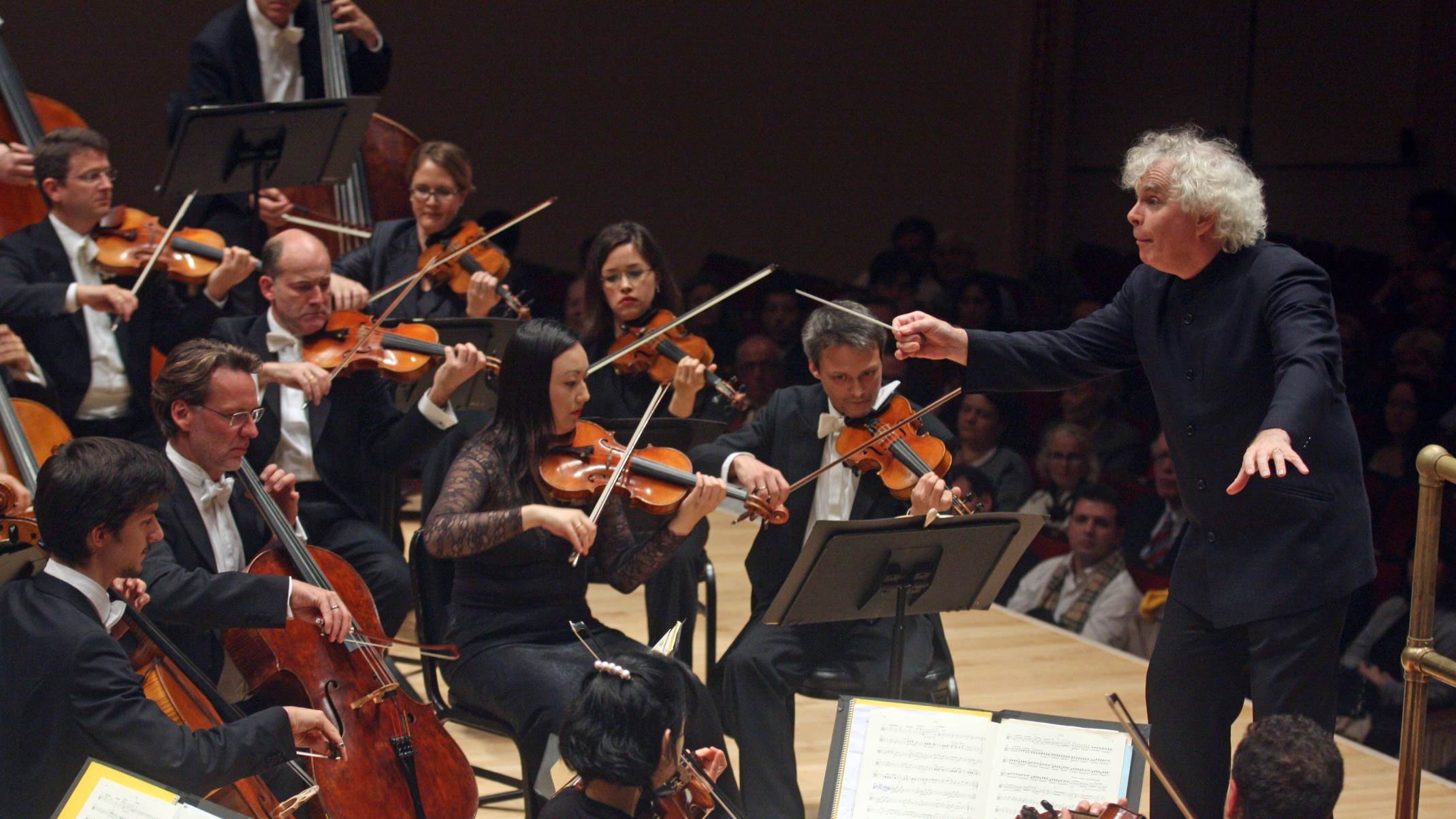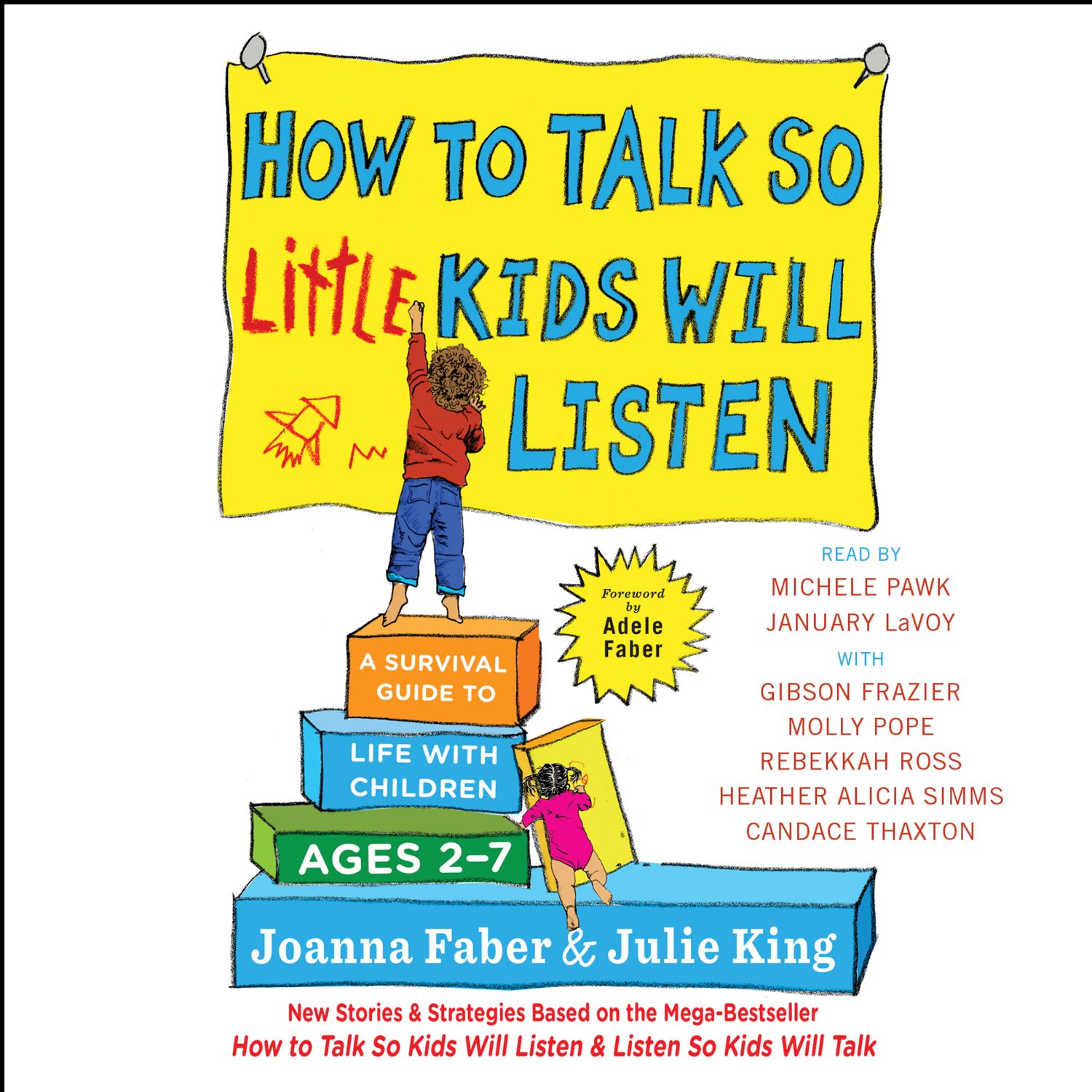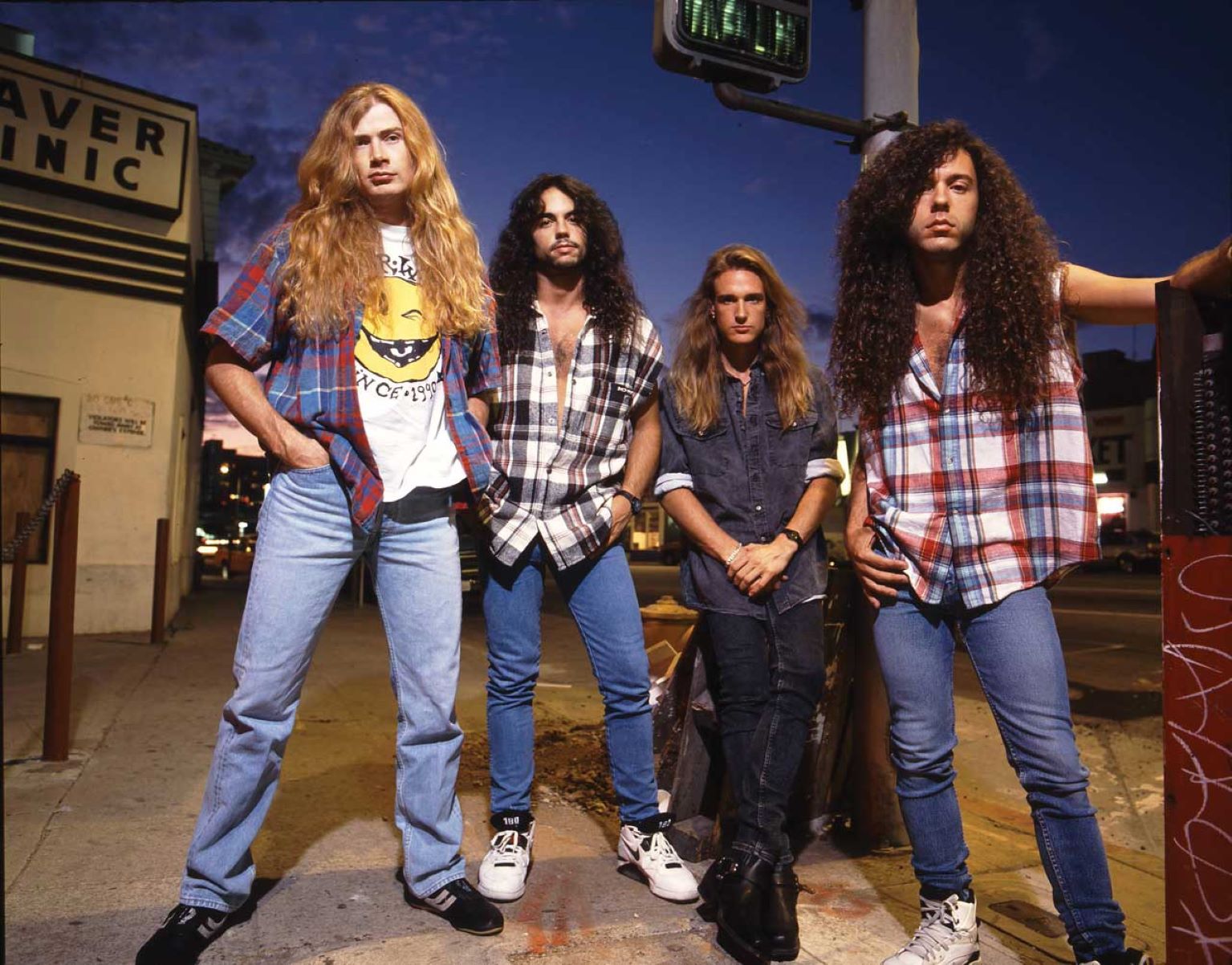

Symphony
How To Bring Kids To The Symphony
Modified: February 24, 2024
Discover effective strategies and tips for bringing kids to the Symphony. Immerse them in the enchanting world of music with our expert guide.
(Many of the links in this article redirect to a specific reviewed product. Your purchase of these products through affiliate links helps to generate commission for AudioLover.com, at no extra cost. Learn more)
Table of Contents
- Introduction
- Benefits of Exposing Kids to Symphony
- Preparing Kids for the Symphony Experience
- Choosing the Right Symphony Performance
- Teaching Kids about Instruments in the Symphony Orchestra
- Making the Trip to the Symphony Enjoyable
- Engaging Kids during the Symphony Performance
- Discussing the Symphony Experience with Kids
- Encouraging Continued Interest in Symphony
- Conclusion
Introduction
Attending a symphony performance is a culturally enriching experience that can open up a whole new world of music appreciation for children. Exposing kids to the beauty and grandeur of a symphony orchestra can ignite their imagination, foster their creativity, and develop their love for music. However, bringing kids to the symphony may seem daunting at first, as you may be unsure of how to keep them engaged and entertained during the performance. But fear not! With some careful preparation and a few simple strategies, you can make the symphony experience an enjoyable and educational one for your children.
Introducing children to the symphony at a young age has numerous benefits. First and foremost, it can help cultivate their appreciation for different types of music and broaden their cultural horizons. Exposing kids to classical music allows them to explore the rich heritage of composers like Mozart, Beethoven, and Tchaikovsky, and discover how music has evolved over centuries. Not only does this enhance their understanding of music history, but it also exposes them to a wide range of emotions and aesthetics.
Moreover, attending symphony performances provides a unique opportunity for children to witness the mesmerizing power of a live orchestra. The sensory experience of seeing the musicians in their formal attire, witnessing the conductor’s precise movements, and hearing the harmonious sounds produced by a multitude of instruments can leave a lasting impression on young minds. The symphony can be a gateway to understanding the different sections of an orchestra, such as the strings, brass, woodwinds, and percussion. It can also spark an interest in playing an instrument and inspire children to pursue their own musical journeys.
In the following sections, we will guide you through the process of bringing your kids to the symphony, from preparing them for the experience to engaging them during the performance. Whether you are a parent, guardian, or educator, these strategies will help you create a memorable and enjoyable symphony experience for your children.
Benefits of Exposing Kids to Symphony
Attending symphony performances with your children can have profound and long-lasting benefits. Here are some of the key reasons why exposing kids to the symphony is a valuable experience:
- Musical Appreciation: Experiencing the power and intricacies of a live symphony orchestra can help children develop a deep appreciation for music. They can witness the mastery of skilled musicians, feel the emotional impact of different compositions, and learn to distinguish between different musical elements.
- Cultural Enrichment: The symphony represents a rich cultural tradition that spans centuries. By attending performances, children can gain insights into the historical and cultural contexts of various compositions. They can explore different musical genres and styles, exposing them to diverse artistic expressions.
- Intellectual Stimulation: Listening to symphonic music engages multiple areas of the brain, stimulating cognitive processes such as attention, memory, and pattern recognition. Exposure to complex musical structures can enhance a child’s critical thinking skills and help them develop a greater capacity for abstract thought.
- Auditory Development: Exposing children to the symphony exposes them to a rich tapestry of sounds, from delicate melodies to powerful crescendos. This can help refine their auditory discrimination skills, improve their ability to recognize different instruments, and develop a sense of musical dynamics.
- Emotional Expression: Symphony performances evoke a wide range of emotions, from joy and excitement to sadness and contemplation. By experiencing these emotional journeys through music, children can develop a deeper understanding and expression of their own emotions.
Furthermore, going to the symphony can serve as a springboard for other educational opportunities. It offers a chance to delve into music history and explore the lives and works of influential composers. Additionally, attending the symphony can inspire children to take up an instrument, encouraging their own musical pursuits and providing them with a creative outlet for self-expression.
By exposing kids to the symphony, we provide them with a doorway to a world of beauty, creativity, and cultural heritage. It broadens their horizons, nurtures their imagination, and fosters a lifelong passion for music.
Preparing Kids for the Symphony Experience
Before attending a symphony performance with your children, it’s important to prepare them for the experience to ensure that they can fully engage with the music and enjoy the event. Here are some tips to help you prepare your kids:
- Introduce Them to Symphonic Music: Start by exposing your children to symphonic music at home. Play recordings of symphonies and orchestral pieces, and discuss the different instruments and musical elements they hear. This will help familiarize them with the sounds of the orchestra and build their anticipation for the live performance.
- Talk About the Symphony: Engage your children in conversations about the symphony and the upcoming performance. Explain what a symphony orchestra is, how it is composed of different sections and instruments, and what to expect during a performance. Answer any questions they may have and address any concerns they might express.
- Set Expectations: Talk to your children about the behavior expectations at the symphony. Let them know that it is a special event where everyone is expected to be attentive and quiet during the performance. Explain the importance of not talking or making loud noises to ensure that everyone can enjoy the music without distractions.
- Dress Appropriately: Discuss the appropriate dress code for attending a symphony performance with your children. While formal attire is not always required, it’s important to dress neatly and respectfully. This can help create a sense of occasion and set a respectful tone for the experience.
- Explore the Program: Obtain a program or research the pieces that will be performed at the symphony. Talk to your children about the composers and their works, sharing interesting facts and stories behind the music. This will deepen their connection to the repertoire and increase their engagement during the performance.
By preparing your children ahead of time, you are giving them the tools to fully appreciate and enjoy the symphony experience. They will have a better understanding of what is to come and will be more attuned to the beauty and nuances of the music.
Choosing the Right Symphony Performance
When bringing kids to the symphony, it’s important to choose a performance that is suitable for their age and interests. Here are some factors to consider when selecting the right symphony performance for your children:
- Family-Friendly Programs: Look for symphony performances that are specifically geared towards families and children. Many symphony orchestras offer special family concerts or programs designed to engage young audiences with captivating and accessible music.
- Shorter Performances: Consider attending shorter performances or concerts with abbreviated programs. These condensed versions are often tailored for children and include popular classics or pieces with recognizable melodies. A shorter duration can help younger children maintain their focus and interest throughout the performance.
- Interactive Experiences: Explore symphony performances that offer interactive elements. Some orchestras incorporate audience participation segments or opportunities to meet the musicians and learn about their instruments before or after the performance. These interactive experiences can enhance children’s engagement and make the symphony more accessible and enjoyable for them.
- Themed Performances: Keep an eye out for symphony performances with themes that align with your child’s interests. Whether it’s a program featuring music from their favorite film or a concert dedicated to a specific composer or musical era, choosing a performance that resonates with your child can spark their curiosity and make the experience more memorable.
- Visual Accompaniments: Some symphony performances are enhanced by visual accompaniments such as projected images, videos, or even dance performances. These multi-sensory experiences can captivate children’s attention and provide a dynamic and engaging symphony experience.
Additionally, consider the logistics of the performance, such as the venue size and seating arrangements. Opt for a seating location that provides a good view of the stage and allows your child to comfortably see the musicians in action. This can help them connect with the performance visually and feel more engaged.
By selecting a symphony performance that caters to your child’s age and interests, you can ensure a captivating and enjoyable experience that sparks their curiosity and love for symphonic music.
Teaching Kids about Instruments in the Symphony Orchestra
One of the exciting aspects of attending a symphony performance is the opportunity to learn about the different instruments that make up the orchestra. Teaching your kids about these instruments can enhance their appreciation for the music and deepen their understanding of how a symphony orchestra comes together. Here are some ways to teach kids about the instruments in the symphony:
- Listen and Identify: Play recordings of symphonic music and ask your children to identify the different instruments they hear. Start with the most prominent instruments like the violin, trumpet, or flute, and gradually introduce more obscure ones like the bassoon or the harp. Encourage your children to listen for the unique sounds produced by each instrument and discuss their characteristics.
- Show and Tell: If you have access to musical instruments, introduce them to your children one by one. Explain how each instrument is played, show them the different parts, and let them touch the instruments if possible. This hands-on experience can help your kids develop a tactile connection with the instruments and understand their physical properties.
- Pictures and Videos: Utilize visual aids such as pictures, diagrams, or videos to illustrate how each instrument looks and sounds. You can find resources online that showcase the various instruments in the orchestra and provide demonstrations of their playing techniques. Encourage your children to ask questions and explore their curiosity about the instruments.
- Books and Educational Materials: Explore children’s books or educational materials that introduce the orchestra and its instruments in a fun and age-appropriate way. Look for interactive books that have sound buttons or online resources that offer games or quizzes about the instruments. These resources can make learning about the instruments enjoyable and engaging for your children.
- Attend Instrument Showcases: Keep an eye out for events or showcases where individual musicians or small ensembles demonstrate specific instruments. These events often provide opportunities for children to see the instruments up close, ask questions, and even try them out under supervision. These hands-on experiences can make learning about instruments even more exciting for your kids.
By teaching your children about the instruments in the symphony orchestra, you are helping them develop a deeper appreciation for the complexity and beauty of symphonic music. Understanding how different instruments contribute to the overall sound enables them to listen more attentively and recognize the unique contributions of each section in the orchestra. It can also inspire them to explore playing a musical instrument themselves and potentially join a school band or orchestra in the future.
Making the Trip to the Symphony Enjoyable
Attending a symphony performance is not just about the concert itself; it’s also about the entire experience surrounding it. To make the trip to the symphony enjoyable for your children, consider these tips:
- Plan Ahead: Map out the logistics of the trip in advance. Check the performance time, location, and parking options. Arrive early to give yourself enough time to find your seats and get settled before the performance begins. Planning ahead can help reduce stress and ensure a smooth experience.
- Create Excitement: Build anticipation and excitement by talking about the upcoming symphony trip with your children. Share interesting facts about the music, the venue, or the performers. Consider playing some symphonic music in the car on the way to the performance to get everyone in the mood.
- Bring Comfort Items: Make sure to pack any comfort items your children might need during the performance, such as a sweater or a small pillow. It’s important for them to feel comfortable and relaxed throughout the concert.
- Snacks and Drinks: Check with the venue’s policy on bringing snacks and drinks. Packing some light snacks and water can help keep your children energized and hydrated during the performance. Opt for quiet, non-crunchy snacks to avoid any distractions for other attendees.
- Use the Restroom: Before the performance begins, make a quick trip to the restroom with your children to ensure they are comfortable and won’t get distracted during the symphony. Encourage them to use the restroom during intermission as well, if needed.
- Review Concert Etiquette: Remind your children of the concert etiquette you discussed earlier—being quiet, not talking, and not using electronic devices. Reinforce the importance of respecting the other attendees and the musicians by being attentive and engaged during the performance.
- Engage in Pre- and Post-Concert Conversation: Use the drive to and from the symphony as an opportunity to discuss the music and the performance. Ask your children about their favorite moments, what instruments they noticed, or how the music made them feel. This conversation can help reinforce their connection to the experience and deepen their appreciation for symphonic music.
By taking these steps to make the trip to the symphony enjoyable, you can create a positive and memorable experience for your children. It sets the stage for them to fully immerse themselves in the music and develop a lifelong love for the symphony.
Engaging Kids during the Symphony Performance
Keeping children engaged during a symphony performance can sometimes be a challenge, but with a little preparation and some creative strategies, you can ensure that they have a meaningful and enjoyable experience. Here are some tips for engaging kids during the symphony performance:
- Choose the right seats: Select seats that provide a good view of the orchestra. Being able to see the musicians and the conductor can enhance your child’s visual engagement with the performance.
- Encourage active listening: Discuss the pieces to be performed beforehand and introduce key themes or motifs. Encourage your child to listen for specific instruments or musical elements during the performance. This can help them actively engage with the music and develop a deeper appreciation for the complexity of the compositions.
- Whisper explanations: During the performance, you can discreetly explain what is happening to your child. Whisper explanations about the different sections of the orchestra, the dynamics of the music, or any notable moments. This can help them follow along and understand the various aspects of the performance.
- Visual aids: If the performance allows, bring a small pair of binoculars to help your child see the details of the performance. You can also try to find a program or guide that includes illustrations of the different instruments in the orchestra. This visual aids can enhance their understanding and engagement.
- Suggest movement imagery: Encourage your child to imagine or create a story in their mind that matches the music. Ask them how the music makes them feel, what images it evokes, or what scenes they can imagine. This creative approach can make the experience more interactive and personal for your child.
- Use subtle gestures: You can gently use hand gestures or subtle movements to guide your child’s attention to specific sections or instruments in the orchestra. By doing so, you can help them focus on different elements of the performance and deepen their connection to the music.
- Engage in non-verbal communication: Use eye contact, facial expressions, and appropriate gestures to convey your enjoyment of the music and encourage your child to do the same. This non-verbal communication can create a shared experience and make the performance more interactive for both of you.
Remember that it’s also important to allow your child to experience the symphony in their own way. Some children may be more absorbed in listening intently, while others may need to doodle or fidget to stay engaged. As long as their actions are not distracting to others, allowing them to have their own way of experiencing the symphony can help them develop a personal connection with the music.
By using these strategies, you can help your child stay engaged and actively participate in the symphony performance, fostering their appreciation for the music and making the experience more enjoyable for both of you.
Discussing the Symphony Experience with Kids
Engaging in conversations with your children about their symphony experience can enhance their understanding and deepen their connection to the music. Here are some tips for discussing the symphony experience with your kids:
- Ask open-ended questions: Avoid simply asking “Did you like it?” Instead, ask open-ended questions such as “What did you enjoy most about the performance?”, “How did the music make you feel?”, or “Which instruments stood out to you?” This encourages your child to reflect on their experience and express their thoughts in more detail.
- Encourage expression of emotions: Music can evoke a wide range of emotions, so ask your child how the music made them feel. Did it make them feel happy, sad, excited, or calm? Encourage them to describe the emotions they experienced during the performance and how the music conveyed those feelings.
- Discuss standout moments: Prompt your child to recall specific moments or highlights from the performance. It could be a particular musical passage, a solo performance, or an impressive musical technique. This allows them to reflect on the aspects of the performance that stood out to them and encourages them to listen and appreciate the details of the music.
- Explore their interpretations: Each person’s experience of music is unique, so allow your child to share their interpretations and personal connections to the music. Ask them if they imagined any stories or images while listening to the performance. Celebrate their creative responses and encourage them to embrace their own musical interpretations.
- Relate to their everyday experiences: Connect the symphony experience to everyday experiences that your child can relate to. For example, you can discuss how the music reminded them of a scene in a movie, a feeling they’ve experienced before, or a natural phenomenon. This helps them establish connections between the music and their own lives.
- Research together: If there were specific pieces or composers featured in the performance, take the opportunity to research them with your child. Read about the composer’s life and inspirations, listen to other works by the same composer, or learn about the historical context of the music. This opens up additional opportunities for learning and exploration.
- Encourage active participation: Foster your child’s curiosity by encouraging them to ask questions about the symphony experience. Answer their questions to the best of your ability or explore the answers together through further research. This active participation helps them develop their analytical skills and nurtures their love for continuous learning.
.
By engaging in these discussions, you create a safe and open space for your child to share their thoughts and feelings about the symphony experience. These conversations not only deepen their understanding and appreciation of the music but also strengthen your bond as you share in the joy of exploring and discovering the world of symphonic music together.
Encouraging Continued Interest in Symphony
After introducing your children to the symphony and fostering their initial interest, it’s important to encourage their continued engagement and exploration of symphonic music. Here are some strategies to help nurture their enthusiasm and develop a lasting interest in the symphony:
- Attend Regular Concerts: Make attending symphony performances a regular activity. Look for family-friendly concerts, youth-oriented programs, or free outdoor performances in your community. By experiencing live symphonic music on a consistent basis, your children will deepen their connection to the genre and develop a stronger appreciation for the music.
- Explore Different Repertoire: Expand your child’s exposure to different types of symphonic music. Introduce them to composers from various periods, such as Baroque, Classical, Romantic, and Contemporary. Explore diverse genres and styles within symphonic music, from ballets and overtures to symphonic poems and concertos. This variety will keep their interest piqued and help them discover their own preferences.
- Encourage Music Lessons: If your child shows a keen interest in music, consider enrolling them in music lessons. Learning to play an instrument or joining a youth orchestra can give them a hands-on experience of being a part of the musical world they’ve been exposed to. It will deepen their understanding of music, improve their skills, and further develop their passion for symphonic music.
- Create a Home Listening Routine: Incorporate symphonic music into your daily routine at home. Set aside dedicated listening time where you and your child can enjoy recordings of symphonies or explore new pieces together. This regular exposure to the music will help cement their appreciation and familiarity with symphonic works.
- Read Books and Biographies: Explore books and biographies about famous composers and performers to further expand your child’s knowledge about the history and stories behind the music. This can help them connect with the human aspect of symphonic music and inspire them with the personal journeys of renowned musicians.
- Encourage Musical Expression: Provide opportunities for your child to express their own musical creativity. Encourage them to compose their own melodies, experiment with different instruments if possible, or create their own musical performances. This hands-on engagement with music fosters their understanding of the art form and can ignite their own passion for composition or performance.
- Support Community Involvement: Look for local community organizations or youth orchestras that offer opportunities for young musicians to perform. Encourage your child to participate in school band or orchestra programs, music festivals, or talent shows. Being a part of a musical community can provide a sense of belonging and motivation to continue pursuing their musical interests.
Remember to be supportive and understanding as your child navigates their own musical journey. Encourage their curiosity, provide them with resources and opportunities to explore, and celebrate their achievements along the way. By fostering a nurturing and encouraging environment, you will help cultivate a lifelong love for symphonic music in your child.
Conclusion
Bringing kids to the symphony can be a transformative experience, opening their eyes and ears to the beauty and power of symphonic music. By exposing children to the symphony, we provide them with an opportunity to explore different musical genres, develop an appreciation for the arts, and ignite their own creativity. Throughout this article, we have discussed various strategies to make the symphony experience enjoyable and engaging for kids.
From preparing children for the symphony experience to choosing the right performance, teaching them about the instruments in the symphony orchestra, and keeping them engaged during the performance, each step contributes to creating a meaningful and memorable experience. By engaging in conversations, exploring different repertoire, and encouraging continued interest in symphonic music, we can nurture their passion and deep appreciation for the symphony.
Attending the symphony with children is not just about exposing them to beautiful music; it’s about creating a lifelong love and connection to the art form. It’s about inspiring them to explore their own musical talents, appreciate different cultures, and develop the ability to express themselves through music.
As parents, guardians, or educators, we have the privilege of shaping and enriching the lives of our children. By bringing them to the symphony, we open doors to a world of creativity, emotion, and cultural understanding. So, let us embrace the opportunity to share the symphony experience with the next generation and watch as their love for music flourishes.


